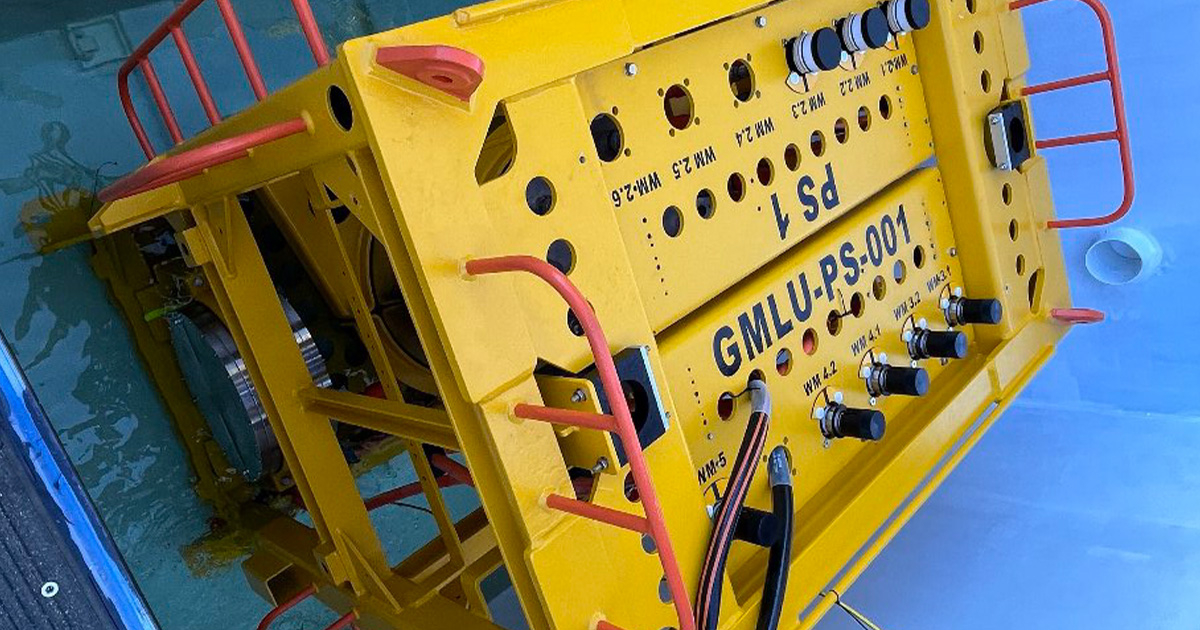The Future of Remote Ocean Power

In the realm of offshore exploration, these are unprecedented times. Never has there been such a pronounced need to systematically leverage ocean-based energy resources to sustainably meet global energy demands. For many who work in the ocean technology sector, this propels us to challenge operational conventions and, as appropriate, apply fresh thinking and practical solutions to solving the associated complexities of the so-called energy transition.
In recent years, breakthroughs in subsea technologies have triggered a new outlook for the offshore energy industry, essentially enabling us to prospect further offshore and into deeper waters. Charting these relatively unknown regions has spotlighted what’s possible in a new era of safer, more efficient, and yes, less carbon-intensive exploration.
Ambition on this scale, however, walks hand in hand with the need to plan, build, and implement the most suitable offshore energy infrastructure and resources—hardware, software, and, of course, a skilled pool of labor. And while we, as a sector, have a fairly aligned sense of what is possible in the long-term by incorporating offshore renewables into the energy mix and steadily decarbonizing existing E&P practices, settling on short-term priorities based on immediate feasibility requires more than speculation—it calls for true innovation.
We can say with no degree of uncertainty, however, that progress will hinge on the buildout of two fundamental technical aspects: 1. Harnessing energy from deeper, more remote regions will rely on unprecedented investment in the next generation of offshore energy infrastructure—a cooperative network of anchored platforms, turbines, seabed cabling, etc. supported by the latest information and communication technology (ICT); and 2. The reliable operation of these assets will depend heavily on localized energy storage systems.
CUSTOM SUBSEA ENGINEERING
Proposing novel solutions to address part two of this conundrum has been a consistent thread to work at SubCtech throughout 2023. It has certainly been a busy year for the team, and one that began with a strategic move to significantly increase our manufacturing capacity by doubling the production area of our Kiel, Germany-based headquarters. This expansion was not only to better accommodate our growing team of expert engineers and support staff—a headcount of 80 up from 20 when the company was founded in 2010—but also in preparation for a highly custom project.
SubCtech has never shied away from a challenge; our company-wide belief is that by partnering with our customers to solve subsea dilemmas, we are able to bring innovation to life, in the form of cost-effective, flexible, and customized solutions. And that is really what our business is; while perhaps most immediately recognized as a supplier of subsea batteries, what SubCtech really specializes in is the design and delivery of energy storage solutions.
One of 2023’s missions was to design, test, and deliver what is, at the time of writing, the first subsea Energy Storage System (ESS) of its kind—a “Portable Offshore Unit”—fully certified by DNV. This made-to-order system serves as a bellwether for the way in which offshore developers are introducing subsea solutions designed to support remote operations.
INDUSTRY FIRST
The unique EES has a total energy storage capacity of 2 MW—comprising two 1 MW battery systems—but this configuration is easily scalable by stacking our SmartPowerBlock battery modules. The Battery Control Module is based on our NetDI® Control technology, and Power Distribution Units (PDU), voltage conversions, and data interfaces can be integrated into titanium or duplex steel housings as required. The fact that SubCtech is a specialist in titanium and manufactures housings means that battery systems can be easily scaled up to meet any special water depth and form-factor requirements.
The EES features SubCtech’s standardized, safe, and reliable Li-Ion batteries, which have a typical service life of 15–25 years, depending on the cell chemistry. The titanium housing eliminates the need for any coating and corrosion protection (CP) and so reduces the risk of any associated pollutants contaminating the surrounding water. The reliability of the system and the quality of the build and components not only optimize the life cycle but also limit the need for monitoring and inspection.
Beyond supporting offshore energy structures, modular EESs of this nature signal a new approach to the use of uncrewed vehicles for certain subsea inspection, monitoring, and repair (IMR) operations, as well as other intervention tasks.
POWERING SUBSEA RESIDENCY
The concept of subsea residency is well accepted. Increasingly remote operations require remotely operatable assets with high endurance capabilities. The premise is simple: rather than deploy and recover remotely operable subsea vehicles equipped with the latest sensors and intervention tooling, have them permanently reside on the seafloor, supported by rechargeable subsea batteries and docking stations—No need for topside support, massively reducing operational costs, CO2 emissions, and time. The goal, ultimately, is to provide carbon-zero survey and IMR solutions with faultless over-the-horizon control and supervision from a shore-based command center.
Across the ocean industries, we have already seen a clear upturn in capital funding to develop a growing range of uncrewed subsea vehicles to perform these campaigns, such as hybrid ROV/AUVs capable of hovering over fixed structures to run inspection reports and perform simple intervention tasks.
Again, scalability is the key here. We know that developers are seeking to explore increasingly remote waters, so their need is twofold: they need innovative approaches to offshore installations as well as increasingly intelligent robotics—uncrewed vehicles equipped with the latest subsea inspection equipment—to service them. The expansion of both is entirely dependent on having access to a steady and reliable power source and so development plans can only accelerate at a pace that scalable battery solutions will allow.
This story was originally featured in ON&T Special Edition 2023. Click here to read more.

